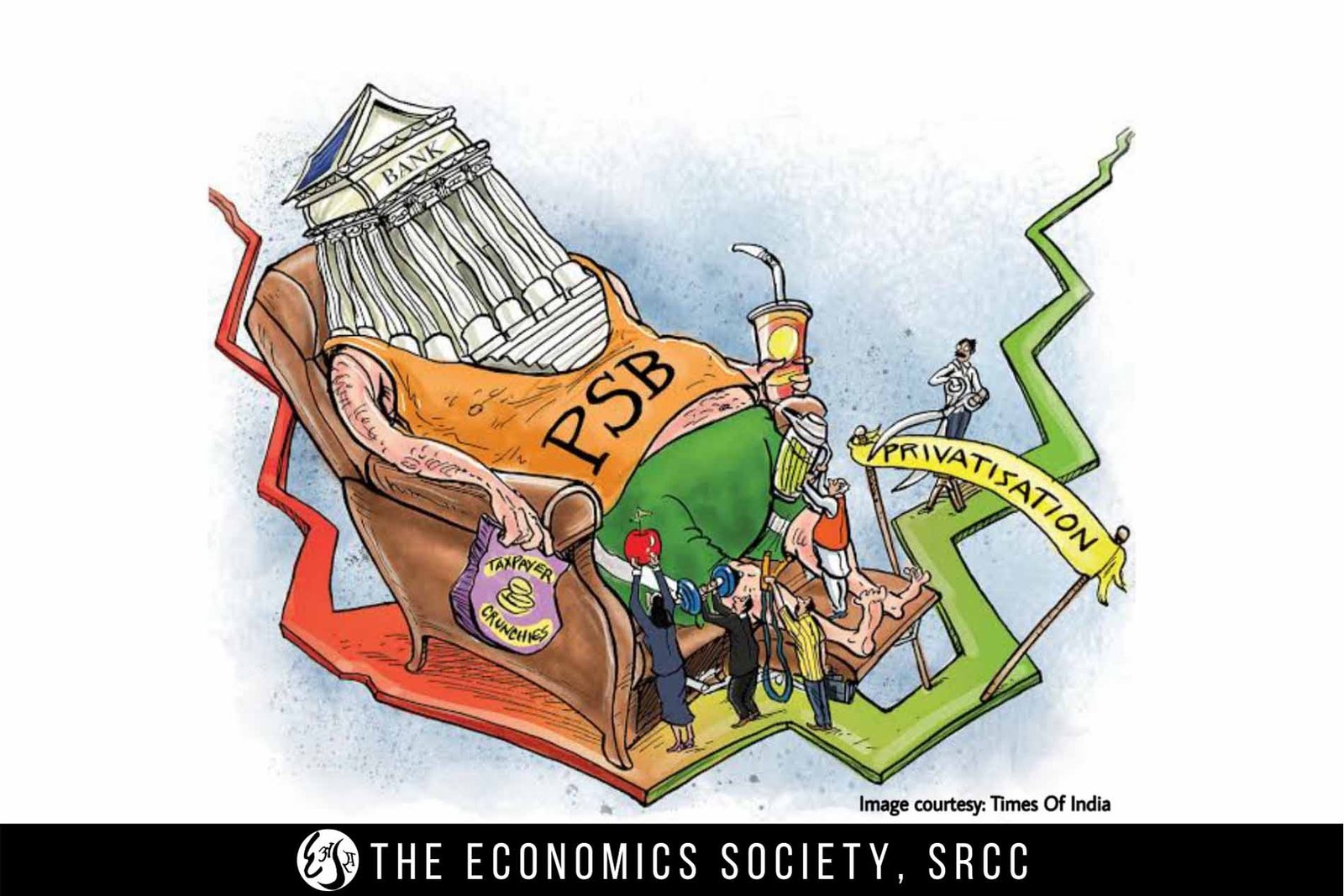
Published in:
Business And Finance
Fall from Grace: The Joy of Flying

119-strong Fleet.
20,000+ Employees.
26 Lakhs+ Customers.
$1.2 billion of bank debt. 32% record Share slump.
For a sector that has the potential to multiply India’s tourism and has been the focus of sustained interventions by the Government, the grounding of the entire fleet of a second local carrier comes as a signal of wrongs in the sector that have started to unravel. From reducing the ‘5/20’ rule to ‘0/20’ or ensuring rapid growth in the domestic market through ‘UDAN’, along with development of air-strips, the Indian Government has reasonably focused on the macro-fundamentals. But while the escape of a liquor-barron became a major poll issue, the problems that existed in the aviation market were never really taken care of. From India’s largest private carrier to a defunct one, Jet Airways has only justified the ‘black-box’ thinking.
Incorporated as a limited liability company with Naresh Goyal at its helm, Jet Airways took off in the mid 90’s, tackling competition from state owned airlines to become the 1st Indian private airline to fly internationally. Starting off with a fleet of four Boeing 737’s and a 6.6% market share in the first year to becoming the largest airline in India with a passenger market share of 22.6% in 2013, the steady growth of the airline to the top was awe-inspiring – alas, built on a foundation whose cracks remained hidden.
Jet’s race to the top never really abided by the market norms. From establishing an elite fleet in a moderately low-income country to buying off low-capital rivals like Air Sahara at high cost, revenue-maximisation and cost-minimisation was perhaps never the main feature. And with the advent of low-cost, cheap-fare airlines such as IndiGo, SpiceJet and Kingfisher, the ideal only galvanised. In response to the eroding of its market-share by new entrants, Jet re-oriented its pricing mechanisms to prefer the ‘middle-income’ household but with an emphasis on high-cost structures, the revenue-model never drove a point.
The real financial problems for Jet started when Goyal bought rival carrier Air Sahara in 2007 for Rs 1,450 crores, throwing them into a pool of multifarious complications- financial, legal and human resource-related. His rationale to buy Air Sahara was to take on Kingfisher Airlines and low-fare carriers Air Deccan, Indigo and SpiceJet, which were at nascent stages then. Instead, this deal reduced Jet’s ability to shell extra money in strategic ways to deal with the competition. After that, the smallest of bumps affected Jet more than its peers.
The dysfunctional relationship between capital needs vis-a-vis the optimum operational requirements to sustain in the Indian market has been the overarching factor in the balance-sheet of every airline in the market. Additionally, the market’s dependence on crude oil prices, further contingent on the Rupee’s exchange rate, severely stresses the ledger. But, while the Government bailed out Air India and other private airlines managed to sustain the pressure, Jet Airways faltered since it never had a well-planned business model in place. Frequent capital interventions had kept the airline running, whether it be the massive dividend Naresh Goyal received out of an IPO or the 2013 deal with Etihad Airways.
Simply put, Jet had always been on borrowed time.
Air India, the official state carrier, has been propped up on bailouts from the exchequer for years. AirAsia, which entered in 2014 with a vow to break even in four months, is still nowhere close to its goal. Vistara, Singapore Air’s joint venture with the Tata Group that started in 2015, has yet to make any money. SpiceJet had almost collapsed in 2014.
What should the mantra then be?
Improvise. Adapt. Overcome. A phrase well known, it was incorporated by the only profitable company throughout – Indigo Airlines run by Interglobe Aviation Ltd. It has reported annual profits since 2011 and its stock has soared by 33% this year. Dirt cheap flight rates, and cheaper fuel was a driving force to swerve Jet to the backseat.
While the airline market grew in the previous year, market-share of most of carriers fell owing to disturbances in fuel-turbine prices and IndiGo’s stupendous rise among competitors within the domestic market. A major problem has been the fudging of balance sheets to portray a rosy picture, hiding the trouble brewing in the backyard. Another question arises with regard to the government’s role in the private sector. In sectors that have a direct interest in the nation’s growth, should nationalisation be a way out for loss-ridden enterprises or should better market fundamentals be a greater trade-off? Afterall, Indian Airlines was nationalised not long ago, but must we follow suit?
Finding the good in bad never made more sense – state owned banks once kept supporting one of Jet’s rivals, the ill-fated Kingfisher Airlines Ltd. long after it seemed rational to do so. Today, these banks are Jet’s biggest creditors but they are unwilling to throw more money at the airline without a clear revival plan.
‘Black-Box’ thinking dwells on the single idea that in order to succeed, there has to be a progressive attitude to failure and the understanding to move past the drawbacks which have been witnessed in the past. The saga of Jet Airways epitomises the failure of the airline, the aviation market and the state in establishing mechanisms and practices that could have prevented the repeat of downturns witnessed earlier as well.
Naresh Goyal’s leadership of the Jet Airways, draws stark comparisons to Alan Greenspan’s chairmanship of the Fed. Having chaired the Fed for about three decades till 2006, Alan wasn’t just credited for its massive success in the initial stages of his term but also became synonymous with the institution itself. Just like Alan, Jet’s entire growth trajectory has revolved around Naresh Goyal and his one-man leadership of the airline. But while both were credited for its massive successes, they also turned to be the culprits for its fall. Inability to pre-empt the dot-com bubble, an outcome of Greenspan-chaired Fed, led to his fall from grace. Similarly, while Naresh’s massive capital inputs pushed Jet to its glory, his inability to adapt to changing times and check the inequitable capital flows also led to Jet’s inevitable collapse.
In the end, the market triumphed and Jet – with it many problems- failed to dodge its doomed fate.
The question is, will we become wiser by learning from the past or are we waiting for the clock to stop ticking on another – seemingly – thriving business for the lesson to hit home?
By Nakul Gupta & Heet Tike.
$1.2 billion of bank debt. 32% record Share slump.
For a sector that has the potential to multiply India’s tourism and has been the focus of sustained interventions by the Government, the grounding of the entire fleet of a second local carrier comes as a signal of wrongs in the sector that have started to unravel. From reducing the ‘5/20’ rule to ‘0/20’ or ensuring rapid growth in the domestic market through ‘UDAN’, along with development of air-strips, the Indian Government has reasonably focused on the macro-fundamentals. But while the escape of a liquor-barron became a major poll issue, the problems that existed in the aviation market were never really taken care of. From India’s largest private carrier to a defunct one, Jet Airways has only justified the ‘black-box’ thinking.
Incorporated as a limited liability company with Naresh Goyal at its helm, Jet Airways took off in the mid 90’s, tackling competition from state owned airlines to become the 1st Indian private airline to fly internationally. Starting off with a fleet of four Boeing 737’s and a 6.6% market share in the first year to becoming the largest airline in India with a passenger market share of 22.6% in 2013, the steady growth of the airline to the top was awe-inspiring – alas, built on a foundation whose cracks remained hidden.
Jet’s race to the top never really abided by the market norms. From establishing an elite fleet in a moderately low-income country to buying off low-capital rivals like Air Sahara at high cost, revenue-maximisation and cost-minimisation was perhaps never the main feature. And with the advent of low-cost, cheap-fare airlines such as IndiGo, SpiceJet and Kingfisher, the ideal only galvanised. In response to the eroding of its market-share by new entrants, Jet re-oriented its pricing mechanisms to prefer the ‘middle-income’ household but with an emphasis on high-cost structures, the revenue-model never drove a point.
The real financial problems for Jet started when Goyal bought rival carrier Air Sahara in 2007 for Rs 1,450 crores, throwing them into a pool of multifarious complications- financial, legal and human resource-related. His rationale to buy Air Sahara was to take on Kingfisher Airlines and low-fare carriers Air Deccan, Indigo and SpiceJet, which were at nascent stages then. Instead, this deal reduced Jet’s ability to shell extra money in strategic ways to deal with the competition. After that, the smallest of bumps affected Jet more than its peers.
The dysfunctional relationship between capital needs vis-a-vis the optimum operational requirements to sustain in the Indian market has been the overarching factor in the balance-sheet of every airline in the market. Additionally, the market’s dependence on crude oil prices, further contingent on the Rupee’s exchange rate, severely stresses the ledger. But, while the Government bailed out Air India and other private airlines managed to sustain the pressure, Jet Airways faltered since it never had a well-planned business model in place. Frequent capital interventions had kept the airline running, whether it be the massive dividend Naresh Goyal received out of an IPO or the 2013 deal with Etihad Airways.
Simply put, Jet had always been on borrowed time.
Air India, the official state carrier, has been propped up on bailouts from the exchequer for years. AirAsia, which entered in 2014 with a vow to break even in four months, is still nowhere close to its goal. Vistara, Singapore Air’s joint venture with the Tata Group that started in 2015, has yet to make any money. SpiceJet had almost collapsed in 2014.
What should the mantra then be?
Improvise. Adapt. Overcome. A phrase well known, it was incorporated by the only profitable company throughout – Indigo Airlines run by Interglobe Aviation Ltd. It has reported annual profits since 2011 and its stock has soared by 33% this year. Dirt cheap flight rates, and cheaper fuel was a driving force to swerve Jet to the backseat.
While the airline market grew in the previous year, market-share of most of carriers fell owing to disturbances in fuel-turbine prices and IndiGo’s stupendous rise among competitors within the domestic market. A major problem has been the fudging of balance sheets to portray a rosy picture, hiding the trouble brewing in the backyard. Another question arises with regard to the government’s role in the private sector. In sectors that have a direct interest in the nation’s growth, should nationalisation be a way out for loss-ridden enterprises or should better market fundamentals be a greater trade-off? Afterall, Indian Airlines was nationalised not long ago, but must we follow suit?
Finding the good in bad never made more sense – state owned banks once kept supporting one of Jet’s rivals, the ill-fated Kingfisher Airlines Ltd. long after it seemed rational to do so. Today, these banks are Jet’s biggest creditors but they are unwilling to throw more money at the airline without a clear revival plan.
‘Black-Box’ thinking dwells on the single idea that in order to succeed, there has to be a progressive attitude to failure and the understanding to move past the drawbacks which have been witnessed in the past. The saga of Jet Airways epitomises the failure of the airline, the aviation market and the state in establishing mechanisms and practices that could have prevented the repeat of downturns witnessed earlier as well.
Naresh Goyal’s leadership of the Jet Airways, draws stark comparisons to Alan Greenspan’s chairmanship of the Fed. Having chaired the Fed for about three decades till 2006, Alan wasn’t just credited for its massive success in the initial stages of his term but also became synonymous with the institution itself. Just like Alan, Jet’s entire growth trajectory has revolved around Naresh Goyal and his one-man leadership of the airline. But while both were credited for its massive successes, they also turned to be the culprits for its fall. Inability to pre-empt the dot-com bubble, an outcome of Greenspan-chaired Fed, led to his fall from grace. Similarly, while Naresh’s massive capital inputs pushed Jet to its glory, his inability to adapt to changing times and check the inequitable capital flows also led to Jet’s inevitable collapse.
In the end, the market triumphed and Jet – with it many problems- failed to dodge its doomed fate.
The question is, will we become wiser by learning from the past or are we waiting for the clock to stop ticking on another – seemingly – thriving business for the lesson to hit home?
By Nakul Gupta & Heet Tike.


